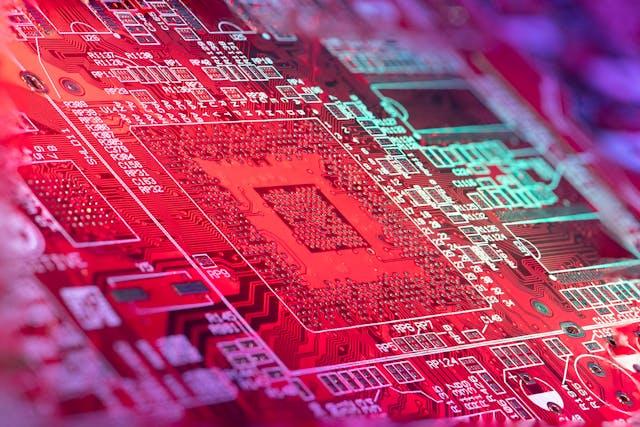How VLSI Drives the Digital Revolution
VLSI (Very-Large-Scale Integration) is at the core of the digital revolution, powering the devices and technologies we rely on every day. By integrating millions of transistors onto a single chip, VLSI has enabled the creation of powerful, compact, and energy-efficient electronic devices like smartphones, computers, and smart gadgets. It drives innovation in industries like telecommunications, healthcare, and automotive, enabling technologies such as AI, IoT, and 5G. Without VLSI, the digital world would be far less connected and efficient, making it the unseen hero behind the rapid advancement of today’s smart, interconnected devices and digital experiences.
What is VLSI design?
VLSI Design (Very-Large-Scale Integration Design) is the process of creating integrated circuits (ICs) by combining thousands to millions of transistors into a single chip. It involves multiple stages, including conceptualization, logic design, circuit layout, verification, and physical design. VLSI allows for the development of compact, efficient, and high-performance electronic devices, making it critical for technologies like smartphones, computers, automotive systems, and IoT gadgets.
The goal of VLSI design is to maximize functionality while minimizing size, power consumption, and cost. Professionals in VLSI design use tools like Verilog, VHDL, and CAD software to craft microchips that are the heart of modern technology.
To gain expertise in this field, enrolling in a vlsi course can be highly beneficial. A VLSI course teaches essential concepts like circuit design, logic synthesis, and verification, providing hands-on training to help learners excel in the fast-growing semiconductor industry.
Current scenario of VLSI industry
1. Growing Demand for Advanced Chips
The VLSI industry is experiencing rapid growth due to increasing demand for advanced chips in technologies like AI, 5G, IoT, and electric vehicles. Industries require high-performance and power-efficient integrated circuits for smarter devices and connectivity.
2. Miniaturization and Technology Nodes
The trend towards smaller nodes—such as 3nm and 2nm technologies—is driving innovation in the VLSI industry. Chip manufacturers are focusing on packing more transistors into smaller spaces, boosting both efficiency and computational power.
3. Talent and Skill Requirements
With the growing complexity of chip design, there is a high demand for skilled professionals in VLSI. Specialized roles like physical design engineers, verification engineers, and analog designers are crucial.
4. Industry Collaborations
Major semiconductor companies like TSMC, Intel, and Samsung are collaborating with technology providers to drive innovation. VLSI design services are also seeing increased outsourcing to meet global needs for specialized chip designs.
The VLSI industry is set for exponential growth as it continues to shape the future of electronics.
Applications of VLSI
- Microprocessors and CPUs
- VLSI is used to design high-performance microprocessors that power computers, smartphones, and tablets, enabling faster data processing and multitasking capabilities.
- Memory Devices
- VLSI is integral in developing memory chips like RAM, ROM, and flash storage, which are essential for data storage in modern electronics.
- Consumer Electronics
- Devices like smartphones, smart TVs, gaming consoles, and wearables use VLSI technology to function efficiently while being compact and power-efficient.
- Automotive Systems
- VLSI is crucial in automotive electronics for applications like advanced driver assistance systems (ADAS), in-car infotainment, and autonomous driving.
- Telecommunications
- VLSI chips power 5G modems, routers, and network switches, enabling faster data transfer and reliable communication in the telecommunications industry.
- Medical Devices
- VLSI technology is used in compact and reliable medical equipment such as pacemakers, diagnostic devices, and wearable health monitors, improving healthcare solutions.
These applications illustrate VLSI’s role in powering diverse technologies across multiple industries, contributing to enhanced functionality, efficiency, and innovation.
Career opportunities in VLSI
The VLSI (Very-Large-Scale Integration) industry offers a range of exciting career opportunities for professionals, driven by the growing demand for smaller, faster, and more efficient microchips. Key roles include VLSI Design Engineer, responsible for designing circuits using hardware description languages, and Verification Engineer, ensuring designs are error-free before production. Physical Design Engineers work on the physical layout of chips, optimizing for speed and power, while DFT Engineers focus on adding testability to chip designs.
A vlsi design course is instrumental in building the skills needed to excel in this industry. The course provides a solid understanding of digital and analog circuit design, logic synthesis, and chip verification techniques. Hands-on projects and exposure to industry-standard tools (like Verilog and Cadence) enhance practical skills, making candidates job-ready. By mastering VLSI concepts and practical tools, learners can unlock rewarding career opportunities with improved job prospects and industry-relevant expertise.
Summed up
VLSI (Very-Large-Scale Integration) is the driving force behind the digital revolution, making our everyday devices smaller, faster, and more efficient. By integrating millions of transistors onto a single chip, VLSI technology powers modern innovations in industries like consumer electronics, healthcare, telecommunications, and automotive. It allows for powerful microprocessors, efficient memory chips, and smart devices that are transforming how we live, work, and connect. As technology advances, VLSI continues to be at the heart of these developments, pushing the boundaries of what’s possible and shaping a connected, smarter, and more digital world for everyone.

